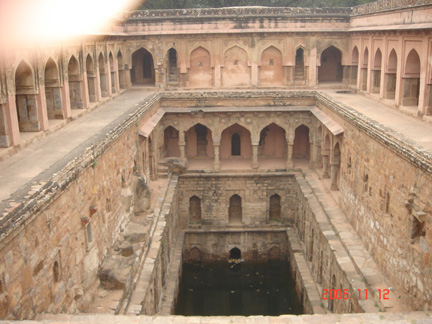Water Harvesting
-Geeta
Verghese
As we hurtle into the 21st
century the possibility of future wars being fought over water has begun to haunt nations making it a theme for discussion at international conferences.
Over the years rising populations, growing industrialization and expanding agriculture
have pushed up the demand for water. Efforts have been made by Governments to collect water by building dams, reservoirs and digging bore wells. Some governments have also tried to desalinate water. To recharge ground water by rainwater harvesting and to also
conserve water has therefore become the need of the hour. It is at such junctures that we need to pause and learn from the wisdom of our ancients- their ability to live in harmony with nature while respecting the need to always maintain the balance between
consumption and replenishment.

Today governments have taken over the responsibility of providing this scarce and precious
resource to the people. As a result, the quality, quantity and even the price charged for the water-supplied leaves the people out of the decision making process.
In ancient India, managing water resources were left essentially to the community. Forts had their own water harvesting and storage systems in the form of rock-cut cisterns, ponds,
tanks and wells that can be seen in use even today. In desert towns in Rajasthan,
innovative methods for water harvesting were devised: houses were constructed in such a way that each had a rooftop water
harvesting system. Though scanty, rainwater from these rooftops was directed into underground tanks.
Over 2000 years ago, Buddhist monks living in the Kanheri caves near Borivli National Park made grooves in the rock face outside
the caves where they meditated, to direct the rainwater into small tanks dug into the rock These tanks still contain water even during the hot summer months. Next to the dargah of the Sufi saint Nizamuddin in Delhi there is a large tank, dug under the supervision
of the saint. Even today, boys can be seen diving into the cool waters of the tank. Near Mehrauli there is the three-storied step-well known as Rajaon ki Baoli and the five-storied Gandhak ki Baoli, named for its strong sulphur smell. While supplying water
to the area, the terraces of these baolis also provided a cool environment for people to get together during the hot summer months.

Ancient Indians knew that vegetation in forests help rainwater to seep gently into the ground. This ground water would in
turn feed wells, lakes and rivers. Protecting forests meant protecting water ‘catchments’. In Ancient India, people believed that forests were the ‘mothers’ of rivers and worshipped the sources of these water bodies as Van Devta (forest god), Vriksha Devta
(tree god) and Kalpavriksha (the wish-fulfilling tree).
It is for modern man to realize that the artificial environment of a 150-storied apartment block cuts him off from his very
life source, the elements that nourish life on this planet and the only way forward has to be to return to Nature.
( Photographs of Rajaon ki Baoli, Mehraulli, New Delhi, taken in February and November by Susan Sharma.
There is some water in the baoli in November. The baoli is fed by a well situated at the back of the structure.)
P.S You may find interesting reading on water related issues at our
BLOG
too!